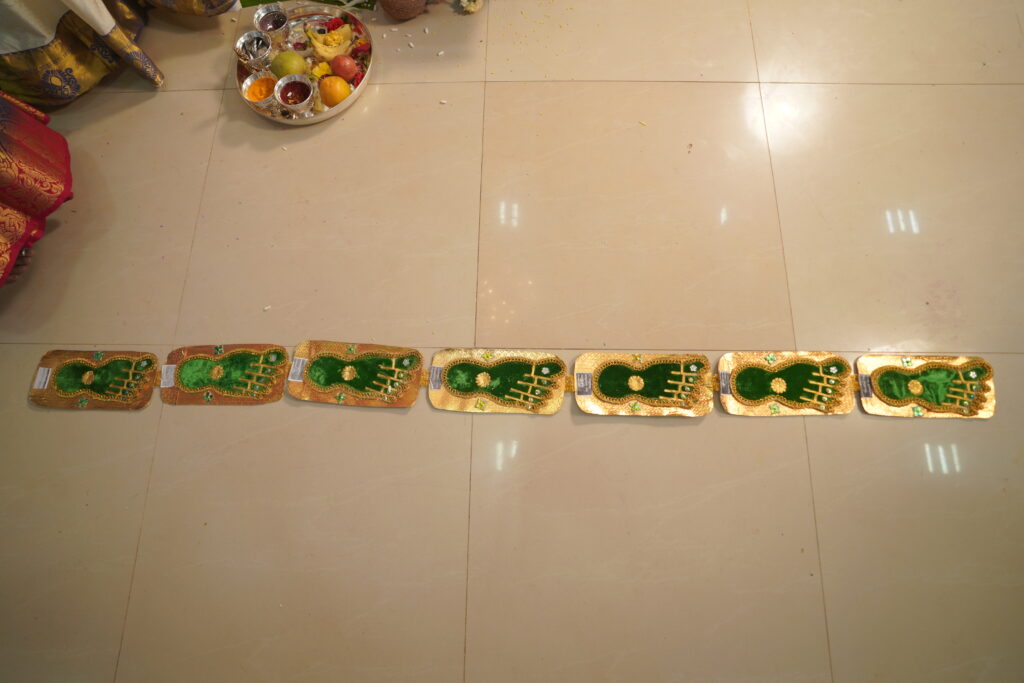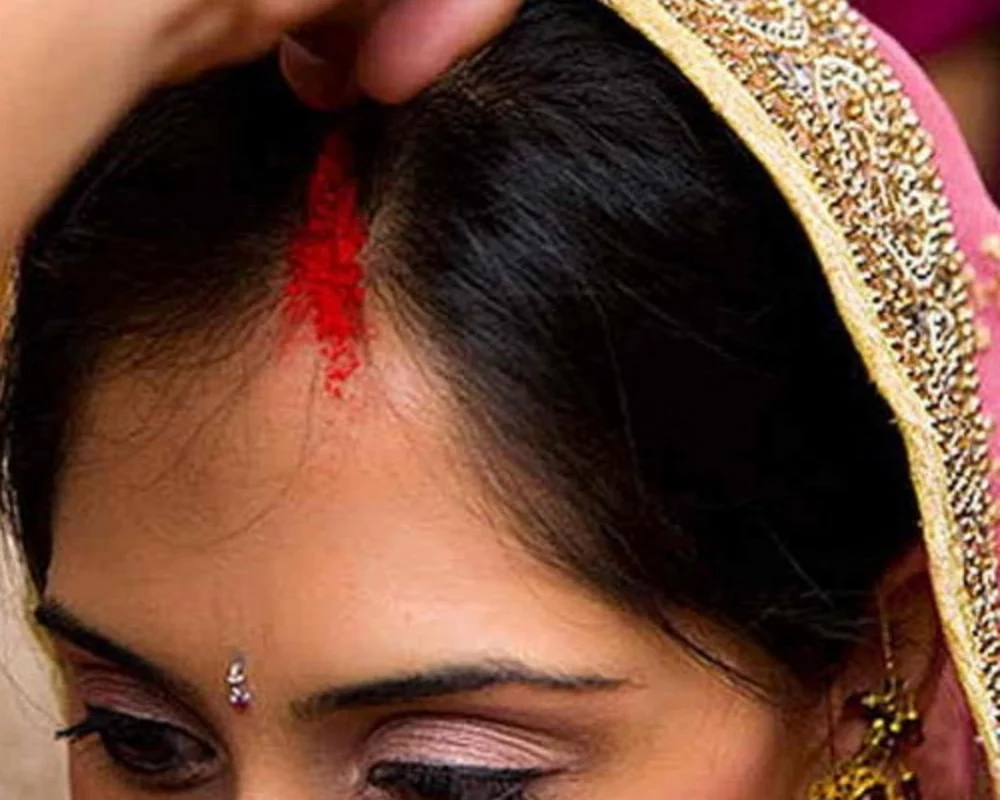Marriage, often known as Vivaha in Sanskrit is a sacred union of two people according to vedic culture. There are many rituals in a traditional Hindu wedding and it differs from region to region and home to home. Universal practice in Indian weddings is Kanyadhana, Panigrahana and Saptapadi. The fire god (Agni) is the primary witness for these rituals. On the other hand, there are also different types of marriages in Hinduism. Here in this article let’s learn more about wedding, its importance, symbols and types of marriages.


Meaning of marriage:
Marriage is not just the bonding between two people but between two souls and families too. The bride and groom promise by saying they abide to each other for entire life. The groom by grasping the hand of bride (Panigrahana) promise to take the girl’s responsibility. And the bride promises to stand by her husband in any situation. Also, the last shloka of saptapadi says “Sakhaa Saptapadi Bhava” which means the husband and wife stay like friends for lifetime. In whole, marriage means friendship, trust, love, respect, support, equality between the couple.


Importance of marriage:
Though today’s world debate about this topic, there are many health and life benefits associated with wedding. Basic is that, the family values and emotional stability of individuals increases with wed-lock. Scientifically speaking, in a happy relationship, cortisol hormone releases in lower amount. Lesser the levels of cortisol, lesser is the stress levels in humans. It also helps to build strong immunity. Social connection helps in lowering the risks of depression, loneliness etc. Now coming to importance according to Hinduism: the literature speaks about four objects of human life called as Purushasutras. They are, Dharma (righteousness), Artha (economy), Kama (love) and Moksha (liberty). And it is believed that, marriage helps to fulfill these four aspects. Meanwhile this leads to attain proper goals in human life. Alongside, in Indian society, a married woman is seen with utmost respect.
Symbols of married women:
In Hinduism married women are recognized by some ornaments which are also related with health. Out of all Mangalsutra, Sindhoor and Toe-Rings are common identities. Mangalsutra is a chain with pendant, which the groom ties to the bride around her neck. It is considered as most auspicious and associated with longevity of the husband’s life. The Mangalsutra is generally a gold chain with round cups in the centre. The friction of metal (gold) with the body helps to regulate blood pressure in women. Alongside, it also activates the Surya Nadi (one of the 72000 nadis of human body) and inherent energy in the body.


Sindhoor is another significant recognition of a married woman. It is usually applied in the partition of hair. It is made of turmeric, lime, sandal and small amount of mercury. According to yogic literature, there are seven chakras (wheels) in human body. By applying sindhoor, it activates Agna chakra which is in the forehead region. Alongside, it also reduces anxiety and stress. The mercury in it helps the woman’s body to stay cool and boosts sexual desire. Probably this is the reason why unmarried women and widows are not allowed to wear sindhoor. Last but not the least, silver toe-rings are worn in pairs on the second toe of each leg. Silver is good conductor; hence it removes negativity from the body. Furthermore, the nerve in the second toe connects to the uterus. The pressure of the ring on the nerve regulates menstrual cycle and ensures healthy reproductive system.

Types of marriages in Hinduism:
Traditionally speaking, there are eight types of marriages in Hinduism, but all 8 are not approved. Here are names and definitions of those eight types of marriages which were in practice:
Brahma Vivaha:
It is the superior of all eight types of marriages in Hinduism. The base for Brahma marriage is family background and education. Dowry is considered as a sin in this type of wedding. Once the boy finishes his student hood (Brahmacharya), his father go in search of a perfect match to him. It means, in this type, the grooms’ parents approach the brides’ parents. The father of the boy sees the family background of the girl and decides whether the match is suitable or not. Whereas, the girl’s father sees for the education of the boy. He gives his daughter only to a person who have learnt Vedas. The father gives his daughter as the gift, after being adorned with jewels.
Daiva Vivaha:
This type of marriage is considered as of lower importance. In this, the parents of the girl wait for the right time to get her wed. Once, the age crosses, they give away her to a priest as sacrificial fee. This is not approved, as such practice is considered as humiliation to womanhood. Also, the manu smriti says, in this form of marriage, the father avails benefit by giving his daughter as fee.
Arsha Vivaha:
This form is totally different from Brahma and Daiva forms. In this, the bride’s father is not required to give anything to the groom. Instead, the girl will be married to sages in exchange of two cows or bulls. If the parents of the girl cannot afford for getting her married, this form of weddings take place. But this not approved, because it is regarded as kind of business by the two parties.
Prajapatya Vivaha:
This is one type which is in practice in many houses today. This is similar to Brahma marriage, but have some differences. Unlike brahma marriage, in this form, the bride’s parents search for groom. The girl’s father treats the groom with respect. Alongside, the father also blesses the couple by saying “may you both perform your rights and duties together”. In addition, the father also tells his son-in-law to look after his daughter with love and care.
Gangharva Vivaha:
Present day’s love marriage is similar to Gandharva Vivaha. It is where the parents’ opinion is not mandatory for being wed. The girl and boy get married on there own wish. But this is not like dating. In this form the girl and boy takes vows before some creature, deity or tree before proceeding further. Example is wedding of Dushyantha and Shakuntala.
Asura Vivaha:
This is a type of wedding is where, the groom voluntarily chooses his bride after paying certain amount of wealth to girl’s father / guardians. In this, the groom may have some abnormalities and may not be equal to bride in looks. This often takes place because of the combination of kinsmen’s greed and groom’s desire. This is not approved because it looks like a commercial transaction. Example for this type of wedding is the wed-lock of Dasharatha and Kaikeyi in the time of Ramayana.
Rakshasa Vivaha:
This is a kind of crime in today’s world. In this type, the groom slays or injures the kinsmen of the girl he wishes to marry. Sometimes he also force battles. Later, he carries away or abducts the girl to convince her for marriage. This was not approved in any time.
Paishacha Vivaha:
As the name itself says, it is the cruel form of wedding. A man furtively seduces a girl when she is unconscious or sleeping. This is considered as a sinful act and date rape both in vedic period and in present day.